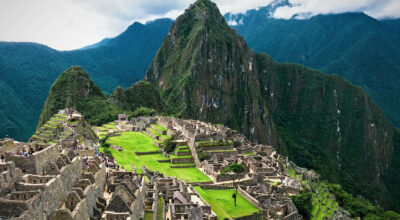Lakhan Thapa : The History About The First Martyr of Nepal

Lakhan Thapa
Nepal’s first martyr Lakhan Thapa Magar was born in In 1891, Shahid Lakhan village municipality ward no. 4. The incident took place in a village called Kahule Bhangar (formerly Wunkot VDC ward no. 4). Lakhan’s real name was Laxman Singh Thapa as he was the youngest of his parents’ twin children. Since there was no provision for the general public to get formal education in Nepal at that time, Lakhan Thapa stayed in the family quarters of a relative working in the 3rd Gurkha Rifles and returned to Nepal after completing his education in Almoda, India.
In 1911, Pukhryoli enlisted in the Magar platoon (Old Gorakh platoon). At that time, the Nepali people had to live under the threshing floor of the autocratic Jahaniya regime started by Jung Bahadur Rana. No one was even in a position to ‘kiss’ against the dictatorial rule of Jung Bahadur. In the Nepali society, which was terrified by the autocratic Rana rule, the call was ‘there is no medicine for time, there is no answer to the order’. During the autocratic rule of Jung Bahadur in Nepal, the British colonial rule was maintained in India. May 10, 1857 After the Meerut massacre, a military revolt against the British colony was born in India.

After the revolt in favor of Indian independence escalated, the Indo-British government wrote a letter to the Prime Minister of Nepal, Jung Bahadur Rana, seeking military assistance. According to the military history book of Nepal written by Tech Bahadur Khatri. On December 10, 1857, Jung Bahadur Rana himself left for India with 9,000 Nepali soldiers, leading 27 Nepali regiments. From the day after Jung Bahadur arrived in Lucknow, India, with his army on March 10, the British and Nepalese combined forces launched military operations in various parts of Lucknow and brutally suppressed the rebels for Indian independence.
Lakhan Thapa Magar, who reached Lucknow with the old Gurkha platoon, and other pro-Nepal Army personalities were outraged by the incident. Lakhan Thapa had declared at the same time that Jung Bahadur Rana had sold Nepal to Mlechch (British) as Jung Bahadur Rana had helped the Indian British to quell the movement for independence by the Indian people. The hard struggle and martyrdom of the Indian people for independence awakened the spirit of patriotism in the popular personalities including Lakhan Thapa Magar and led them to fight against the tyrannical rule of Jung Bahadur.

Lakhan Thapamagar, who was waiting for the right time for the people’s uprising, lost his life due to his military skill and skill. In 1925, he became the captain of the Nepal Army. However, he felt compelled to revolt against Jagir Jung Bahadur of the Nepal Army by the people’s unity. In 1927, Bunkot Kahu of Gorkha left his army job with his friend Jaisingh Chumi. The leave was over but he did not return to work and actively mobilized the people against the rule of Jung Bahadur. Lakhan Thapa Magar had built a strong fort at Wunkot Kahule Bhangar in Gorkha with the help of the local people. A symbolic temple of Manakamana Mai was established in the fort premises. Worship was held daily in the temple.
Lakhan Thapa used to unite the people who came to the temple for worship, inform them about the brutal rule of Jung Bahadur and his anti-people activities and provide political consciousness. Despite the propaganda that religious activities were being carried out externally, the people’s militia was in full swing against the tyrannical rule of Jung Bahadur. Due to Lakhan Thapa’s eloquence, logical ability and good personality, many people had organized against Jung Bahadur in a short time. Lakhan Thapa told the organized people at that time, “I am the incarnation of Siddha Lakhan Thapa.” Jung Bahadur sold Nepal to Mlechch (British).

It is making the world tremble. Manakamana Mata has commanded me to remove Jung Bahadur and return to the golden age of democracy in Nepal. At that time, Manakamana’s fame was also used strategically to involve the then Nepali society, which was showing faith and belief in religion and gods and goddesses, in a massive campaign of people’s revolt. Lakhan Thapa’s strategic proclamation had a profound effect on Nepali society and succeeded in creating a large public opinion against Jung Bahadur.
Martyr Lakhan Thapa used the fame of Manakamana and Siddha Lakhan Thapa strategically to garner public support in his rebel campaign. As two personalities with the same name and surname, Lakhan Thapa Magar, are famous in the history of Nepal, there is confusion and confusion in Nepali society as to whether they are the same person. But they have different personalities.
He is famous in the history of Nepal for his contribution. Siddha Lakhan Thapa Magar, the first priest of Manakamana Bhagwati’s temple, was a 17th century Ram Shah. Similarly, the first people’s revolt against the tyranny of Jung Bahadur. Lakhan Thapa Magar, the first martyr to create tides, is a 19th century Jung Bahadur figure. In 1932, the united people against the rule of Jung Bahadur declared Lakhan Thapa as the Prime Minister and Jaisingh Chumi as the Commander-in-Chief.
This was the first alternative power declared by the Nepali people against the rule of Jung Bahadur. According to historian Padam Jung Rana, Lakhan Thapa had gathered 1,500 people with weapons and even threatened to attack the capital. Lakhan Thapa’s plan was to end the reign of Jung Bahadur and usher in the golden age of democracy in the history of Nepal. At that time, Sarvajit Thapa used to sit in Pipalthok and look after the Gorkha issue. He complained to Jung Bahadur that an armed people’s revolt led by Lakhan Thapa was being prepared against the rule of Jung Bahadur in Bunkot, Gorkha.

Upon receiving this information, Jung Bahadur became angry. He ordered his younger brother Dhir Shamsher to arrest Lakhan Thapa and his associates and bring them to Kathmandu. As per the order, the soldiers of Devidatta platoon reached Gorkha and laid siege to the fort of Lakhan Thapa. Clashes broke out between the rebel forces led by Devidatta Paltan and Lakhan Thapa. It is said that Dhir Shamsher also had to struggle to quell the rebellion. Eventually the rebels were arrested.
Must Read
They were imprisoned in bamboo cages and tortured to death in Kathmandu. According to historian Pramod Shamsher Rana, a case was filed against the rebels at the Thapathali court and they were severely beaten and severely tortured. Lakhan Thapa and his associates wishing for their fort complex at Gorkha Bunkot
It was decided to hang him in front of the temple in the presence of the local people. But they did not bow before the Rana ruler. Lakhan Thapa was accused of treason for organizing anti-Rana activities by providing political consciousness to the people against the Rana regime. Devidatta’s platoon soldiers took the executed rebels to Gorkha. On 2 February 1933, Lakhan Thapa, the first rebel leader, was hanged to death on a pomegranate tree in front of the Manakamana temple, which had been replaced within his own fort complex in Gorkha Bunkot.
At the same time, other rebels were killed. It is said that the rebel leader Lakhan Thapa was even skinned and hanged. In the political history of Nepal. The revolt led by Lakhan Thapa from 1927 to 1933 was the first mass revolt against the Ranatantra. The revolt succeeded in mobilizing the disenfranchised Nepalese people in the dark night of the autocratic dictatorship established by Jung Bahadur Rana for the first time by organizing and participating in the revolt for democracy.

It turned out to be a revolt of historical significance that shook the heart of Jung Bahadur Rana, who wanted to maintain his tyrannical and authoritarian rule over the state power. This armed insurrection, which was carried out by the people by establishing alternative power by preparing political documents against the autocratic rule of Jung Bahadur, cannot be considered trivial. This incident was able to light the lamp of political consciousness in Nepali society and lay the foundation of the democratic movement.
Therefore, appreciating the sacrifice and contribution of Lakhan Thapa Magar, the hero of this revolt, the Government of Nepal awarded him the B.Sc. He was declared a martyr in 2056 BS. It was decided to formally confer the status of the first martyr of Nepal on September 19, 2008. After the implementation of federalism, Bakrang, Manakamana, Taklung, Ghairung, Bunkot and Namjung VDCs of Savik have been merged in the name of Martyr Lakhan Thapa. Of course, this title is a tribute to his sacrificial sacrifice and hard work for the establishment of people’s rights. At the same time, this honor is a matter of pride for all Nepali people who love democracy and justice.






